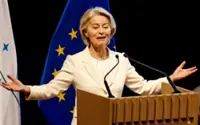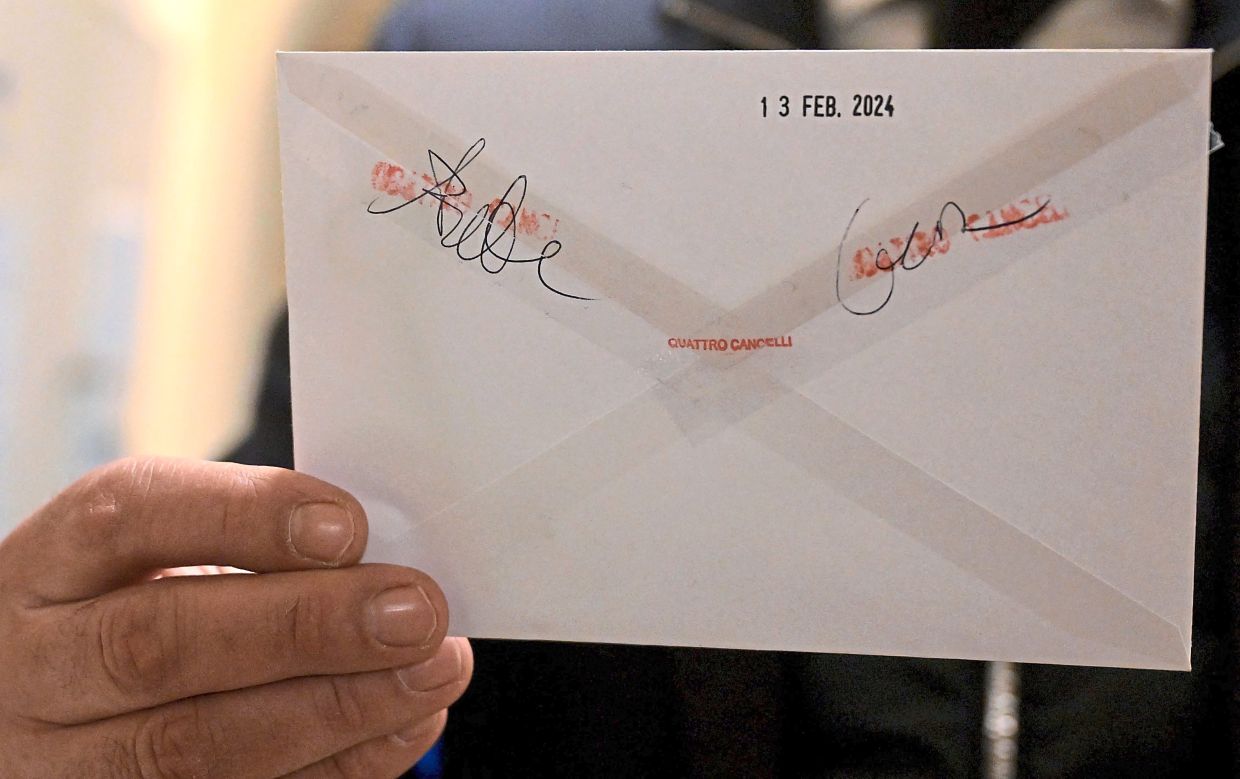Crea holding a big mast of keys while walking in a gallery at the Vatican Museums. — Photos: TIZIANA FABI/AFP
It's still dark outside when Gianni Crea pushes open the imposing entrance door to the Vatican Museums in the Vatican City, a heavy ring of keys in his hand.
Soon he is moving through the deserted corridors to open the doors of some of the most visited galleries in the world.
“There are exactly 2,797 keys ... Each one has between one and five copies, so we have more than 10,000,” said the 51-year-old Roman, who knows every lock by heart.
From the Bramante Staircase to the Gallery of Maps, Crea’s silhouette weaves its way through the museums, between marble sculptures, Roman antiquities and Renaissance paintings.
In a few hours, thousands of tourists will be crowding into the museums’ 1,400 rooms.
But before dawn, only the tinkling of a metal key ring disturbs the silence of the darkened halls containing masterpieces by Raphael, Leonardo da Vinci, Caravaggio and others.
“Every nook and cranny is a piece of history,” says Crea, wearing a suit and tie, as he illuminates the works with his torchlight.
To cover the 7km-long route both morning and night, he supervises a team of 10 “clavigeri” or “keepers of the keys”.
“The museums are divided into four zones so every clavigero opens between 60 and 75 doors ... a total of more than 270 doors a day,” he explains.
After 25 years, the history buff still marvels at his job: “There are always things to learn.”
VIP tour
Among the mass of keys attached to a thick steel ring, certain examples stand out. The oldest, dating from 1771 and opening the Pio Clementino Museum, measures around 15cm.
Others bear a yellow label – these are used during the conclave to lock the doors leading to the rooms where the cardinals meet to elect the pope.
But the most precious is the only one without a number. It gives access to the famous Sistine Chapel and its vault decorated with Michelangelo’s frescoes.
According to strict protocol, it is placed each evening in a sealed envelope and kept in a safe, itself protected within a narrow room with a reinforced door next to an official photo of Pope Francis.
In recent years, Crea’s morning tour has become less solitary: with a VIP ticket, small groups of up to 20 visitors can accompany him, enjoying the museums in their rare uncrowded state.
“I said to myself, ‘no one will ever come at 5am’. But it was a brilliant idea,” he enthuses.
Pope’s home
The tour begins in a spacious varnished wooden elevator and ends with a unique panorama of the Eternal City and the lush greenery of the Vatican Gardens, topped by the dome of St Peter’s Basilica.
But the highlight for most tourists is seeing the majestic Sistine Chapel, a jewel of art and architecture, without hordes of visitors and their noise.
There is silence, with guests able to “contemplate all the works alone, in complete tranquillity”, Crea says.
With the help of a parish priest, Crea was hired in 1998, back then just one of three key-keepers.
“In the beginning, my job was just to open and close,” he recalls.
Later on, Crea began studying different languages – English, Spanish, French – and developed his knowledge of art history.
“These are actually our roots, and I’m very happy about this.”
He has worked under three popes – John Paul II, Benedict XVI and now Francis – but has yet to give the current Argentine pontiff a private tour.
“This is his home, so he can come whenever he likes,” Crea says. – AFP
Choose your gallery
For more information on the Vatican Museums, go to the official website (museivaticani.va). There are a total of 54 museums and galleries that the public can visit at the Vatican Museums. It is probably not possible for one to visit all the museums in a single day or even two days, but of course, there are a handful that are “must-see” spaces.
For example, the Sistine Chapel which houses one of the most beautiful frescoes in the world. Previously called Capella Magna, the building was restored and revived in the 1470s. Numerous artists, including Sandro Botticelli, Pietro Perugino, Domenico Ghirlandaio, Pinturicchio, and Cosimo Roselli completed the Sistine Chapel’s first paintings.
In 1508, Pope Julius II commissioned Michelangelo to dress up the ceiling with frescoes. The artist and sculptor created a truly amazing artwork that is just as iconic today as it was centuries ago. The project was completed in 1512 and put a lot of physical strain on Michelangelo that it actually damaged his eyesight permanently.
Another highlight of the Vatican Museums in St Peter’s Basilica. While the current church is not the original basilica (the original was built in the 4th century by Emperor Constantine), the reconstructed building is still a gorgeous work of art.
The project took about 120 years to complete, so there were many skilled workers, designers and artists who worked on the reconstruction. These include Donato Bramante, Michelangelo, Carlo Maderno, and Gian Lorenzo Bernini. Today, it is said to be the world’s most famous piece of renaissance architecture.
The Bramante Staircase, while not an actual museum or gallery, is also worth checking out. Located in the Pio-Clementino Museum, the staircase – also known as the Spiral Staircase – is the work of Giuseppe Momo.
You can take the city train (Vatican City to Rome) to get to the museums, or hop on the Rome Metro. The Metro line A has a stop called Ottaviano-S, located just outside of the Vatican walls.
There is no need to buy your museum entry tickets in advance as you can get them at the entrance. However, do consider going on a guided tour, especially if you don’t have much time to spare during your visit.







